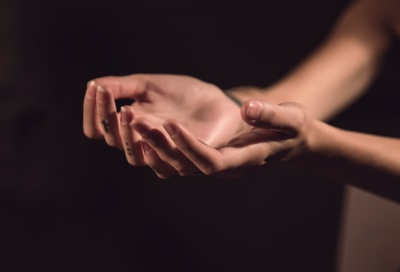Color: Does it Hurt?
On August 28, 1963, over 250,000 people marched in Washington D.C to stand for equality. A situation that has been going on for centuries, men and women were treated unfairly because of the color of their skin. The problem lingers to the twenty-first century. During the first half of the semester at a new dance studio, I have been seen as the Asian girl with characteristics that other dancers find uncanny or disturbing. In many cases, the observers had not formally met who they are discriminating. They went right to judging based on the color of the other’s skin. Even though people say color does not change the way they think, the color of an object changes the perception of that object.
People react to color differently which then affects their actions. Each man, woman, and child have different reactions to color. For instance, someone could think yellow is a nice, happy color while another person believes yellow is disgusting and too bright to even look at. This affects the way they look at objects. A yellow toy could be happy or disgusting which could lead to whether or not a child wants to play with it. The child’s reaction toward the toy’s color came naturally; however, sometimes children are taught to react to certain colors. When Martin Luther King Jr. was young, he played with a boy who was white. When they got older, the white boy’s parents prohibited the two children from playing because Martin’s skin color was different. Martin’s friend soon was taught that people with Martin’s skin color are ruthless and dirty. If King’s friend was not educated by his parent’s opinion, the two children would have remained friends.
Although colors can evoke to different reactions, they also have broadly agreed-upon symbolic meaning. Symbolism is creating symbols to represent characteristics or ideas. Opinion making and symbolism of color are different. Symbolism in color has a fixed idea of what it means. For example, grey represents either intelligence or blandness. Opinion-making is the way someone feels about the color. Grey could be too boring and unappealing. Although the example have similar ideas of the color grey, the opinion is one of hundreds, and having certain words like “too” emphasizes the emotion of their opinion. Whereas in symbolism, the idea is established and agreed upon. Another example is the color black. Black could be represented as mystery or protection while someone’s reaction could be too dark and deadly. This example of the color black has two different perspectives. Despite that, both symbolism and opinions do not touch the characteristics of the object.
Some people claim that color does not affect their actions, but real life situations prove otherwise. It is true that some people are color blind or blind which gives them the inability to see color, but for those who can see color, people are objects, and people perceive people. There is color on people; their skin, hair, eyes are perceived by other people. Stereotypes still influence people’s interactions. Even color-blind people still see shades and could hold a belief that blonde haired women are unsophisticated or dark skinned men are hostile. In my own experience as a girl with an Asian-standard appearance, I have been exposed to people’s reactions to the colors I carry. It is unusual to see a girl with dark hair and dark, small eyes at a dance studio dancing. Based on my hair, eye, and skin color, my fellow dancers assume that I participate in dance for college applications, and that I didn’t care about dance as a hobby or passion. Their parents assume that since I’m enrolled in a lot of dance classes, I am failing academics. There have been cases where dancers devote their whole lives to dance and eventually drop school because they couldn’t keep their grades up which is why they might think I have failing grades. I once had two mothers looking at me as I walk by, and they whispered in each other’s ears, “Why is she here? Shouldn’t she be studying for some advanced course? …maybe she doesn’t care.” Other times I hear, “She’s here so often, she’s probably doing athletics as a major instead of something useful.” or “That Asian should just leave.” In reality, I like dance, and I’m a straight-A student in school. Some dancers opened up to me and became my friends because they got to know me. Others judge me based on my features, make assumptions, and then ignore me. This does not happen to just me; situations like this happen to any person of color. Some see their appearance and judge the person. They do not go any deeper than that.
“I have a dream that my four little children will one day live in a nation where they will not be judged by the color of their skin but by the content of their character.” was projected by Martin Luther King Jr, a man that help led the Civil Rights Movement. He did not want his children to be assessed based on the color of their skin. He wanted them to be looked by their qualities. Color is an amazing part of living life, but living life with people perceiving traits grounded from color is not a life to live.


“Color: Does it hurt?” is a very passionate and personal piece of writing! There was an even amount of ethos, logos and pathos. Your piece of writing started with a great introduction: a fact about MLK Jr.’s march. Throughout your piece, there is an considerable amount of pathos. “I have been seen as the Asian girl with characteristics that other dancers find uncanny or disturbing” is the phrase that followed the facts about MLK Jr. and it stuck out the most. It set the tone for your writing, to almost show what angle your writing would be from. Other pieces of pathos can be found throughout your writing, when you wrote about the different perspectives of colors, and when you wrote about your personal experience of being discriminated against. Ethos makes a show when you speak to the audience’s character; your persuasive words would hopefully appeal to the audience. Overall, this writing was accurate in its facts, as well as very inspiring. You have a great writing technique, and I admire how passionate this writing is. “I have a dream” is something that I think you have! Thank you for being so motivational on this topic, I hope that you continue to achieve greatness in your dance and academic careers. Being passionate about equality is a special quality to have.
LikeLike
Thank you for taking the time to read my essay even though my essay was a lot longer than other students. My plan was to use Pathos more than the others but still make the essay have even amounts. Your review was very much appreciated 🙂
LikeLike
Tiffany! This essay was extremely well written! I must agree with the Jordyn S., it was very passionate and personal. I loved the way you connected it to yourself. It made me, the reader, see colors and their meaning from your point of view. When you alluded circumstances these days to Martin Luther King Jr.’s time, it made me realize how similar these times are to the civil rights era. The Ethos and Pathos clearly stand out. I also feel like you are speaking to people who can relate to you, proving you are taking the audience into account while writing. The sentences that really stood out to me were, ““Why is she here? Shouldn’t she be studying for some advanced course? …maybe she doesn’t care.” Other times I hear, “She’s here so often, she’s probably doing athletics as a major instead of something useful.” or “That Asian should just leave.” It made me feel the emotions you might have felt when they were spoken to you. Hence, great job! I hope you continue dance and excel in areas that you are passionate about and that no one or anything gets in your way. 😀
LikeLike
Thank you for taking the time to read my essay. I’m happy that you felt the emotions I’d felt when I was in the situation. Your review was very much appreciated.
LikeLike
Tiffany, this was a beautifully written passage. The passionate diction made it significantly easier to take your side and believe it wholeheartedly. Your use of personal real life situations brought real emotional feel into it and really pulled the entire thing together. That was a great use of pathos. You used ethos extremely effectively in giving the audience actual examples from your past and letting them get a glimpse of what it is like to be in your position. This helped me as reader to understand and relate to your situation and trust your opinion more as someone who has had experience with it. You had an abundance of facts and real life situations for logos which helped pull the story together in a way that was not just emotional appeal. It was a solid piece. Keep up your hard work!
LikeLike
Thank you for taking the time to read my essay. Pathos was probably my main focus for this essay. Your review was much appreciated.
LikeLike
I agree with earlier commenters that you connected your personal story to MLK’s dream effectively. You argue that his dream is not yet realized because of our human biases involving color. Approaching stereotypes and discrimination through the perspective of a human response to color was so creative and interesting. I appreciated this and learn from it. My favorite line: “In my own experience as a girl with an Asian-standard appearance, I have been exposed to people’s reactions to the colors I carry.” It is powerful because you are being brave enough to share your story with others. ~Mrs. C
LikeLike
This essay was really well written! The title immediately drew me in, and I think that was really important. The way that you integrated your own story into the argument was really effective. The way you integrated King’s quote at the end of the essay was also a very good way to end this essay.
LikeLike
Overall, this is a really thoughtful essay, and as a reader I could really feel your reflection upon the topic. However, I think more research may be in order- I understand this is an incredibly deep-rooted concept/problem, but I think you could make this essay even more persuasive by adding in facts, quotes, and relevant statistics. The full-circle ending really brought everything together beautifully, and the personal touches made it very heartfelt. I hope you don’t feel so excluded at your dance studio anymore- colour is a beautiful thing!
LikeLike
This is a very impressive summary. I absolutely agree with how skin color changes in peoples perspective and opinions. I am glad you made an article like this and for saying the deeper meanings about skin color. You outta be proud of yourself, because this is beautiful! :]
LikeLike